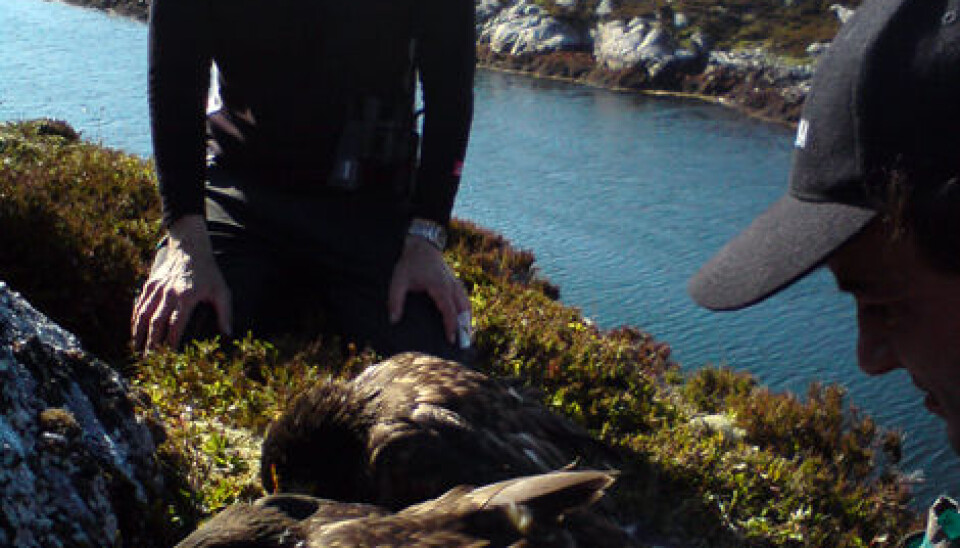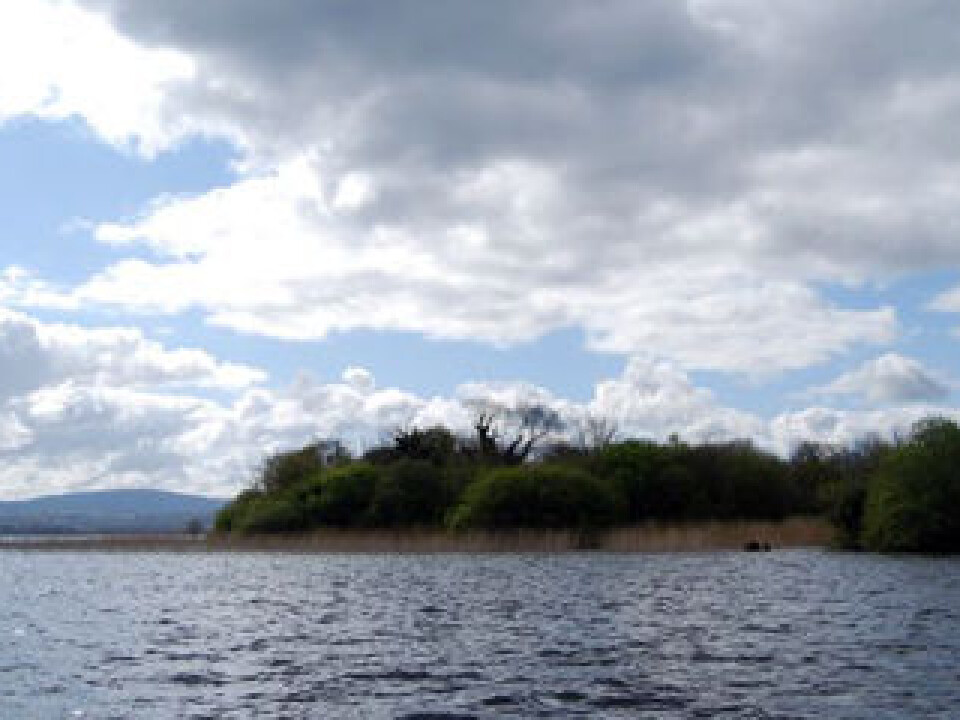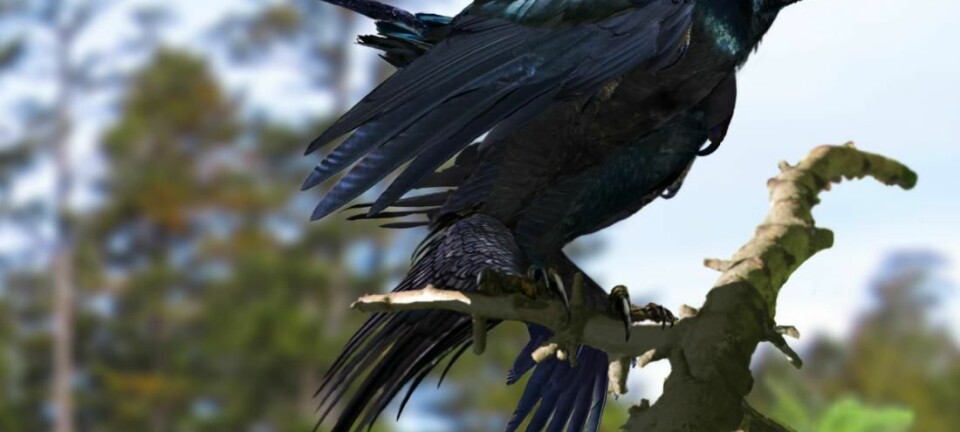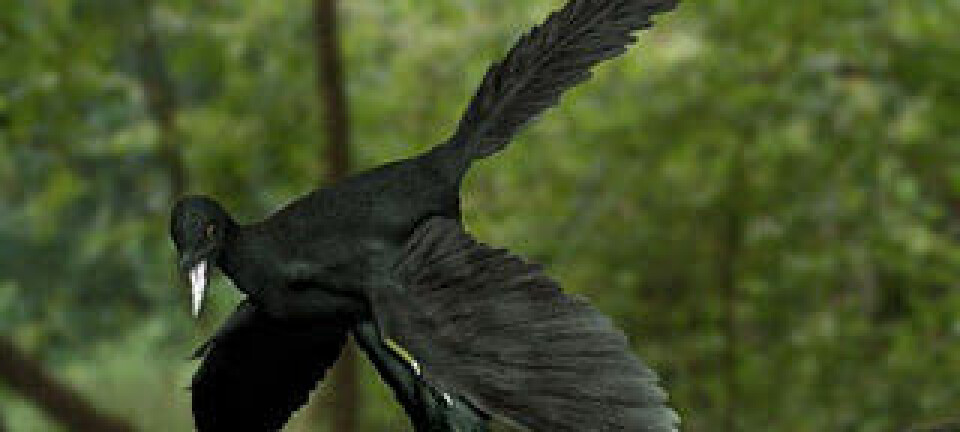This article was produced and financed by NINA - Norwegian Institute for Nature Research

Norwegian sea eagles nest in Ireland
The white-tailed sea eagles nest in Ireland for the first time in over 100 years.
Denne artikkelen er over ti år gammel og kan inneholde utdatert informasjon.
The Irish white-tailed sea eagle was driven to extinction in the early 20th century.
But thanks to the White-Tailed Sea Eagle Reintroduction Project the eagles face a new spring in Ireland with the first documented nesting attempt in more than a century.
Norwegian pioneers
The breeding birds that bring new hope to the sea eagle stock are a four year old male and a three year old female originating from the island of Frøya, off the west coast of Norway.
They were released in Killarney National Park in 2008 and 2009, respectively. Last year they each found their way to Co. Clare and paired up, and this spring they nested on a small island on Lough Derg, one of Ireland’s biggest lakes, close to the village of Mountshannon.

"This is a truly momentous event," says Dr. Allan Mee, project manager for the Golden Eagle Trust. "Seeing them nesting in the wild in Ireland is the day we have all been waiting for".
The future looks bright
First-time breeders lack experience, and breeding success depends on getting everything right. But Mee is impressed by the young couple.
He says that once the birds settled down to incubate the clutch of eggs both parents were very diligent. The nest has only very rarely been left unattended and birds have been quick to spot potential dangers such as the presence of hooded crows which might predate the eggs.
"Since the eggs take some six weeks to hatch they still have a long way to go. But so far so good," says Mee.
And according to Dr. Duncan Halley, the eagles have chosen a good spot for their first attempt.
White-tailed sea eagles usually begin to breed at five years of age. But in this case the lake is shallow and productive, ensuring a good food supply. In addition, there is no competition from other breeders.
"This combination may explain breeding at this young age," Halley states.
Together with Dr. Torgeir Nygård he is responsible for the NINA part of the programme.
Following the sea-eagles
The sea-eagle population was also threatened at one time in Norway, but increased as a direct result of legal protection in 1968.
Today Norway has the largest breeding population in Western-Europe.
In total one hundred Norwegian white-tailed eagles were released between 2007 and 2011 in Killarney National Park, Co. Kerry.
These birds have dispersed throughout Ireland and beyond. To date 21 birds are known to have died.
All birds were collected in the Trøndelag area in Norway, one bird only from nests with more than one chick. A time-consuming task, as only 20 percent of the nests have two chicks, or, very rarely, three.
"The contribution from the many local volunteer bird enthusiasts has been crucial for the project’s success," says Halley.
In May he and Nygård are flying to Ireland together with some of the volunteers, and with a lot of luck, to observe the hatching.
However, from a distance.
The birds are very sensitive to disturbance, and the brooding period is a critical time. The Golden Eagle Trust have constructed a viewing area onshore with a telescope for close viewing. Information on the birds, their ecology and conservation is also available.
Whatever the outcome of this nesting attempt, the signs are good for future breeding in the area.
Sea-eagles can live up to 30 years and generally mate for life with adult pairs remaining within their home range throughout the year.

































